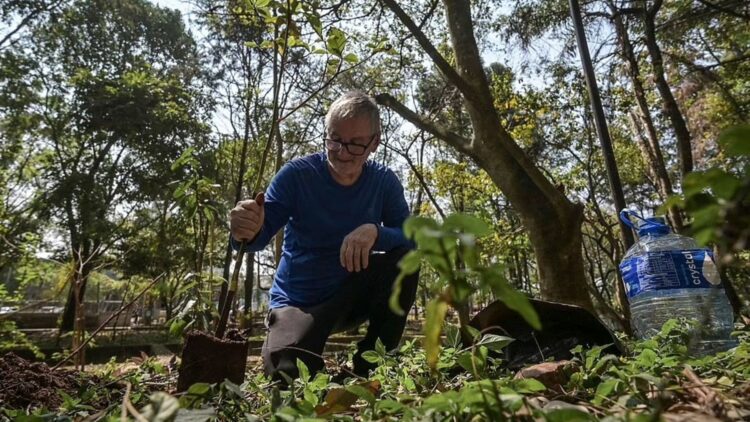São Paulo is, in 2025, the most populated city in Brazil and one of the most populated in the world, with more than 22 million people. What used to be, two centuries ago, one of Brazil’s six biomes (the Atlantic Forest), is now a city overcrowded with people and with a significant deficit of green areas. But this began to change two decades ago, when a local resident, now retired (73 years old), promised himself to do something about it.
The retiree, who has become involved in this task, thanks to his individual initiative, is helping reforestation, as he reports to a media outlet in Spain, thanks to his tree planting. In this way, he favors the sustainability and conservation of the environment and the necessary education about ecology.
Known as the ‘tree planter’: more than 40,000 trees planted
His name is Helio da Silva, although he is known as ‘the tree planter’. A ‘madman’, as he defines himself, who in the last 21 years has planted no less than 40,000 trees in the Tiquatira Linear Park, what before this action was nothing more than a neglected wasteland, with dirt and garbage, dividing two major avenues. “It was an abandoned, degraded, dirty area…”, he tells La Vanguardia.
The beginning, like many stories, was not easy. One day on his way back from work, as an executive of a sugar company, he said ‘enough’. The landscape he was contemplating in the Tiquatira area made him change his mind. “I’m going to plant trees and transform Tiquatira into a huge green park,” he told his wife when he got home. So he got hold of a jequitibá seed, the largest species in the Atlantic Forest, and planted it on a dirt road.
Despite the difficulties, no one was going to undo his plan.
What started with one seed was later expanded with a bag of 200 seeds of the same species. But it went wrong. A businessman, who was using part of that space as a parking lot, uprooted the seeds in fear that he might lose customers. Later, with 400 seeds, more of the same happened. But this did not dampen Hélio’s spirits. Nothing of the sort. “On the contrary: now I’m going to plant 5,000 trees,” he said to himself. And, on the third time, the project took shape.
It even reached the ears of Eduardo Jorge, then Secretary of the Environment of São Paulo. After coming to Tiquatira to see it for himself, he decided that he had to do his bit. So the local government invested in the project, which was later joined by local agronomists and gardeners.
What’s about to come
“In the last 21 years I have planted an average of 2,000 trees per year. Now there are 41,300,” explains Hélio, who boasts about this linear park, one of the largest (at three kilometers long). In total, the park has become a belt of 320,000 square meters and 162 different species of plants and trees.
And its impact is not only visual. Birds and fauna that have not been seen since the beginning of the last century have returned to this neighborhood, in addition to becoming an entertainment space for citizens. “This green lung has greatly changed the life of this region and its surroundings. People have more self-esteem, better health, more leisure, more life,” he explains proudly.
His big goal: 50,000 trees planted.
But it won’t stop there. Now, the goal is to plant 50,000 trees. In addition to that, he wants libraries to be installed in the area so that, in addition to strolling, people can sit and read. “It is important to include environmental education and the importance of trees in the school curriculum. We have to stimulate the connection between nature and young people.” Because, he adds, planting trees “is not just about planting holes”.

